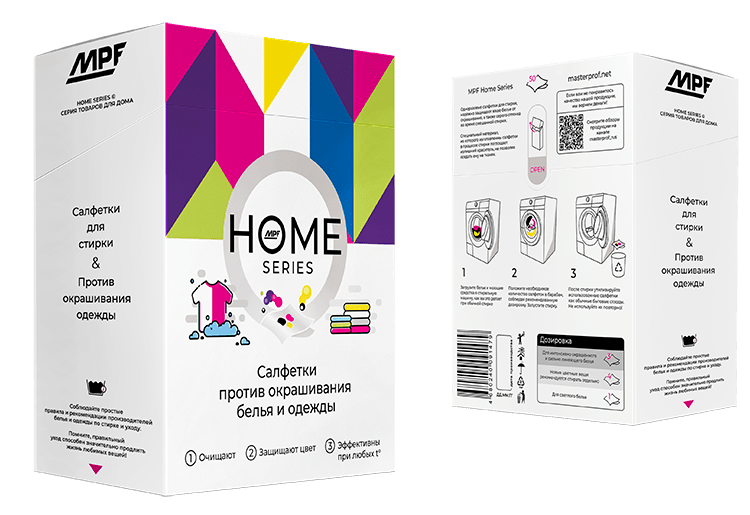During the installation of an irrigation system, there is often a need to irrigate not only the lawn, beds and greenhouses, but also trees and shrubs located on the territory. This will require some form of watering that encourages root growth deeper into the soil, making trees more durable and healthy.
Contents
- Advantages
- Which trees is this irrigation system suitable for?
- Tree watering rules
- How to water the arborvitae?
- How to water arborvitae after planting
- Watering an adult arborvitae
- How often should the fir tree be watered?
- Watering the pine tree
- How to water a juniper?
- Maple planting and caring
- Apple tree watering features
- How often should an apple tree be watered?
- Drip irrigation for apple trees
- How to water a pear?
- Pear seedlings
- Watering cherries
- Cherry seedlings
- Cherry 2-5 years
- Cherry 5-15 years
- Adult cherry over 15 years old
- Drip irrigation for trees
What is drip irrigation? It is one of the methods of irrigation, based on the uniform delivery of a limited amount of water directly to the root system of plants. This method saves time and water consumption. But this watering is only suitable for small plants (tomatoes, cucumbers, peppers) and is most often used for irrigation in greenhouses.
But what to do if you have the whole garden or the wood on the site? How to organize automatic watering of apple, cherry, plum, sweet cherry, currant, gooseberry and other garden plants or arborvitae, pine, spruce? For this purpose there is the special system of watering for trees and shrubs.
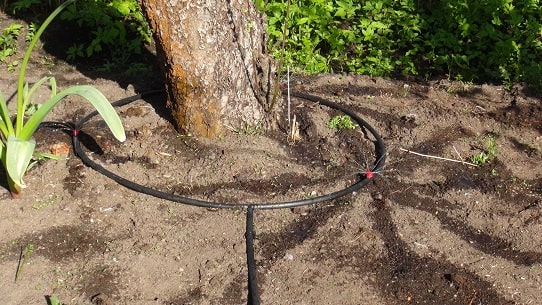
Trees and shrubs are often not arranged in a straight line, if not at all randomly. They can be located at different distances and at a large angle in relation to each other. In this case, it is recommended to use HDPE tubing rather than drip belt, as bends will lead to creases and interruptions in water flow. In general, the volumes of water supplied through the drip belt will be completely insufficient for the trees. The HDPE tube is distinguished by its strength and is convenient in that it fits perfectly in an arc or in a circle, while not breaking. In this case, in the necessary place of the tube, holes are made with a special hole punch into which the emitters are inserted. By turning the emitter, you can adjust the amount of water poured out.
It is possible to lay the tube around trees in various ways. Alternatively, you can simply take a long bay of pipe and stretch it between the trees while making a ring around each of them and securing the ring with special pegs. In this case, you can do without fittings (tees and elbows). Or you run the hose in a straight line, and then make special circular bends to each tree as shown in the figure. Aesthetically, this option will look more attractive, but will require the use of fittings.
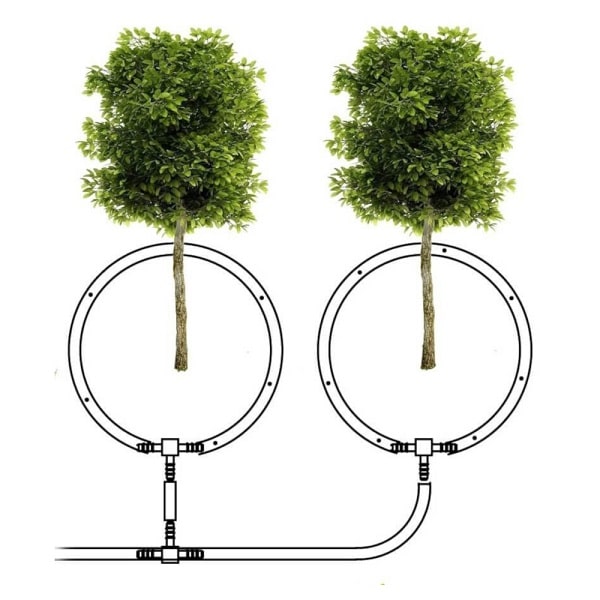
For watering trees and shrubs, we recommend using the Sadovnik drip irrigation system manufactured by the MasterProf Company. This kit already includes all the components necessary for installing the system, and also provides detailed assembly instructions. The Sadovnik set is mounted under any plants and allows simultaneous irrigation of trees or shrubs located at a distance of up to 4 meters from each other.
The system involves the use of drip rings with a diameter of 1.5 meters, located around the tree and carrying out an even supply of water. Thus, the roots receive the required amount of moisture evenly and in a timely manner and provide the owner with a good harvest. The complete pipe is supplied in a coil, so you can independently determine the diameter of the ring around the tree you need.
Advantages
- Water saving;
- The closed circle around the tree trunk ensures uniform watering;
- The ability to use a timer that turns on automatic watering at the appointed time;
- Usability;
- Possibility of connection to the central water supply system.
- Regulation of the amount of poured water and the diameter of the irrigation by turning the emitter.
Which trees is this irrigation system suitable for?
This tree drip kit is ideal for ornamental plants and fruit plants.
Fruit trees: plum, cherry, sweet cherry, apple, pear, sea buckthorn, currant, gooseberry, cherry plum, apricot, etc.
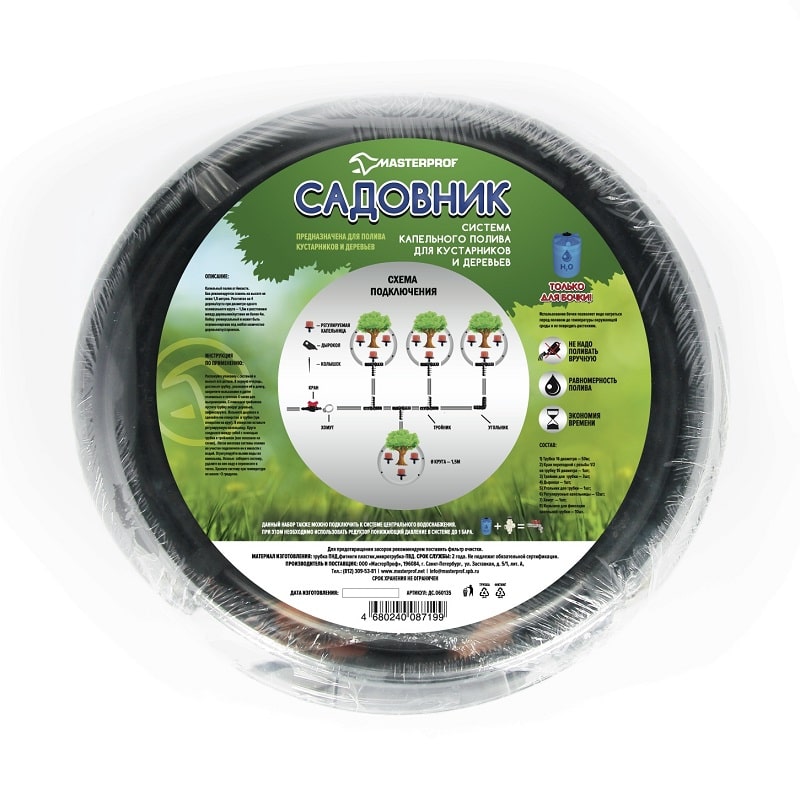
Ornamental plants: arborvitae, pine, spruce, juniper, maple, etc.
Tree watering rules
Most people starting the tree cultivation ask themselves the question: how to properly water trees for their growth and longevity?
The tree needs irrigation throughout its entire development. However, it is worth considering the fact that for each tree species at a certain age, the watering rate is different. Improper water supply and its amount can negatively affect the development of the root system and ultimately destroy the tree.
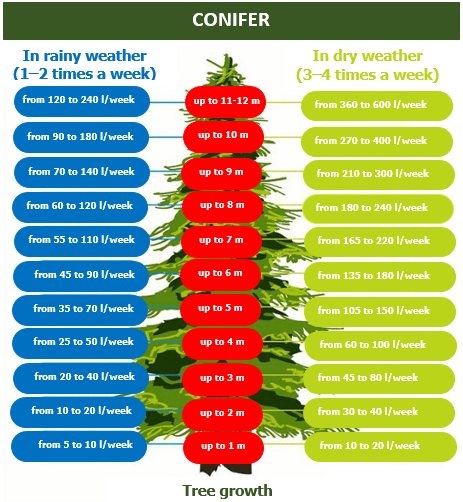
For good development, it is enough to observe the following rules:
- Recommended soil moisture during the growing season should be 60% of the total moisture capacity. With a lower percentage, the tree will receive less mineral nutrients.
- The frequency of watering depends on the stage of plant development. If the plant is young and in a hot climate, then it is necessary to water it about five times during the growing season. Older trees are less demanding and 2 times are enough for them. However, during the spring period before flowering, and also in the fall before wintering, the roots will need more moisture.
- The amount of water for moistening depends on the depth of the roots and the maturity of the crop: seedlings will need about 40 liters of water, trees about five years old – 60 liters, 10-year-old plantings will need about 130-150 liters of water, old trees are less demanding and they have enough 40 liters for each square meter of the circumference of the circle. You also need to take into account the component of the soil located in the garden area. In the case when you have to deal with sandy soil, it is recommended to reduce the amount of water poured out at a time, but at the same time increase the number of irrigations. In case of clay soil, on the contrary, immediately pour out a large amount of water at a time, however, reduce the number of sprinklers.
| Plant | Water consumption | Watering frequency | Manual watering | Automated watering |
| Lawn grass | 10 mm (1000 l/100 sq.m.) | 1-2 days | 50 min | 10 min |
| Shrub – up to 0.9 m | 2 l | 1-2 days | 15 min | 3 min |
| Shrub – up to 1.5 m | 6l | 5-7 days | 30 min | 6 min |
| Tree – up to 3 m | 22 l | 5-7 days | 10 min | 2 min |
| Tree – more than 3 m | 85 l | 5-7 days | 30 min | 6 min |
| Ground-cover | (2500 l/100 sq.m.) | 8-10 days | 120 min | 30 min |
| Flower bed plants | 25 mm (2500 l/100 sq.m.) | 8-10 days | 120 min | 30 min |
| Agricultural crops | 25 mm (2500 l/100 sq.m.) | 8-10 days | 120 min | 30 min |
How to water the arborvitae
Arborvitae is one of the most popular evergreen perennial trees, which in Russia is mainly grown artificially in garden and park plots. The homeland of this beautiful tree can be called East Asia and the USA, where arborvitae grows in height up to twenty meters. In our country, the height can be much lower, it all depends on the region and climatic conditions in which the tree is grown.
The popularity of arborvitae in Russia is not accidental. Firstly, these are very beautiful trees that fit perfectly into many design solutions, and secondly, they are not whimsical and do not require excessive care. It can serve as both a decorative element and a hedge, which absolutely does not allow noise and wind to pass through.
How to water arborvitae after planting
Watering the arborvitae depends on the weather conditions. You may water it in the spring for the first time. In the warm season, it is recommended to water the plant once a week at the rate of one bucket per average tree. With the onset of summer in hot weather, it is necessary to water the plant twice a week.
Watering an adult arborvitae
Arborvitae watering is reduced depending on its development. An adult arborvitae requires watering once every two weeks, while consuming 10 to 15 liters of water. During the hot season, additional moisture may be required in the form of weekly watering of 10 to 15 liters per each tree. It is also recommended to loosen the soil after each watering.
In the spring and autumn, the plant may well have enough natural precipitation. Most often, sprinkling is not possible, since an adult tree of a decorative variety can reach 5 meters in height.
How frequently to water a spruce
Spruce is an ideal coniferous ornamental plant. Even in winter, your garden or plot is full of life and looks spectacular. But in order for your spruce to please you with the excellent condition of the needles, you need to correctly plant them and carefully monitor watering and feeding.
In autumn and spring, there is enough natural precipitation for the development. However, with the onset of heat and heat, trees experience a moisture deficit. It is recommended to water the spruce with warm water once every couple of days, while spending 10-12 liters of water for each plant in small portions. During the very hot season, the tree should be watered daily in the morning and in the evening. Sprinkling the spruce crown will also speed up the rooting of the seedling in a new place and make the tree more attractive.
Watering the pite tree
Pine is not a plant that requires excessive maintenance. It is necessary to water the pine only during rooting 1-2 times a week for 15-20 minutes. In a few months, when the seedling gets stronger, the plant will have enough natural precipitation to feed, but it is recommended to water it a couple of times during the entire warm season. Sprinkling, that is, moisturizing the crown itself, is carried out in the evening after sunset in order to avoid burns.
How to water juniper
There are many varieties of juniper, so the care of each of them can be different. Most of them are not demanding.
The plant can be without water for a long time, but it is still necessary to water it once a month. One plant will require approximately 15-25 liters of water, depending on weather conditions. In particularly hot summers, weekly watering is recommended for junipers, which is best done in the morning or evening.
Water temperature plays an important role in the life and development of the juniper. Strong contrast between water and soil temperatures can cause root rot. Drip irrigation for shrubs and trees from the MasterProf manufacturer will solve this problem. Industrial water intended for watering a tree has time to warm up in a day and irrigates the plant with water of the required temperature.
There are varieties of juniper that are not drought tolerant. If you notice discoloration or stunted growth, we recommend increasing the amount of irrigation.
Maple planting and caring
In Russia, maples, like any other large-sized ornamental plants, can be successfully planted both in spring and autumn in the central zone. When planting in spring, maple roots have time to adapt to the first winter and grow powerful roots. An autumn planting can affect the strengthening of the roots. In summer, it is better not to plant maples in containers from among young seedlings.
After planting the maple, watering should be carried out using a double rate of water (about 30 liters of water) per plant. After irrigation and water absorption into the soil, it is recommended to mulch the trunks. Watering is carried out for all types of maples, among which there are drought-resistant, but always showing normal active growth with additional watering.
Watering maple is recommended in particularly dry seasons no more than once a week. There are also species that are recommended to be irrigated throughout the warm season once a month in normal weather and once a week in dry weather. Maple requires slightly more water consumption than many other ornamental plants - 15 liters of water per plant.
Apple tree watering features
Many summer residents still argue about the advisability of irrigating the apple tree, because it has enough natural precipitation and moisture, which the apple tree absorbs by its roots deep in the soil. It should be noted that the weather becomes unpredictable and changes frequently. Regions that previously received heavy rainfall can suffer from drought and vice versa. Proceeding from this, it is extremely difficult to predict the yield indicators "with natural irrigation", and in the southern regions it is completely impossible.
How often water an apple tree
Any gardener who wants to get a fertile crop should check each time after watering to what depth the soil is soaked. To do this, you do not need to poke your finger into the ground, just take a small stick about 14 centimeters long and having a ribbed surface. By pushing in the stick, you can determine the optimal amount of irrigation water for each specific irrigation area throughout the year. The more the stick is covered with dirt, the deeper the soil gets wet.
The timing and methods of irrigating the apple tree, which are considered the best:
- 15 days after full bloom;
- When an increased growth of new apples is detected;
- After isolation of the buds on the shoots of the current year;
- Immediately after harvesting fruits and trees of the "summer variety" and when pouring "winter apples".
- After dropping all the leaves of the apple tree. Such irrigation is also called "sub-winter water-charging".
It is not recommended to irrigate at the time of and immediately after flowering, as a large amount of water can negatively affect fruit setting and contribute to a sharp jump in mold.
It is recommended to water the apple tree in summer once or twice at the end of June or in July, as well as when apple receiving plumpness. In this case, it will be necessary to use 6-9 buckets of water for apple trees from 6 to 15 years old, 40 liters of water for every quarter of the irrigation circle of the groove for trees up to 35 years old, as well as 7 buckets of the same length for trees over 50 years old.
Drip irrigation for apple trees
MasterProf Company has developed a drip irrigation system for trees and gardens, which soaks the soil directly above the roots of each tree with water and effectively affects the yield. Owing to the accessories of the kit, you can independently control the flow rate for slow or fast water penetration into the ground.
Why drop irrigation is chosen for apple trees?
- Ideal for watering fruits
Modern ways of watering apples promote tall tree growth and dense planting. With drip irrigation, water is distributed locally over narrow rows of crops, while keeping the surface between the rows dry; - Saves time and effort
Put on drip irrigation once and you will have to spend several hours manually watering trees and shrubs any longer. Just harvest all over your garden, as accurate watering promotes the even development of flowers and fruits; - Quality apples require better quality
Larger apples require higher prices. By watering and fertilizing your fruits throughout the growing period, you can be sure that your apples will grow healthy, large and tasty; - Saves water on site
Drip irrigation for trees and shrubs provides for the accurate water delivery, ensuring that resources are not wasted; - Fruits get the right amount of water at the right time
Lack of water not only causes fruits to fall from trees. It can also cause physiological diseases, which in turn reduce the resistance of apples when stored in the refrigerator; - Reduces moisture and disease risk
High humidity in an apple orchard is a one-way ticket to fungal diseases such as scab and mold. Drip irrigation avoids excess moisture;
How to water a pear tree
Pear is a rather capricious plant that loves moisture, warmth and light, does not tolerate cold and drafts. Even the most frost-resistant pear varieties cannot withstand temperatures below 30 C and need protection.
Despite this, pears are successfully grown by summer residents and give very tasty and healthy fruits. The success of growing directly depends on the care, maintenance and watering of the tree.
Many summer residents and gardeners do not know how to properly water a pear in the garden. It is moisture-loving and the amount of irrigation must be commensurate with the type of soil and climatic conditions in which it is located.
In the middle zone of our vast Russia, for successful cultivation, a single watering per month is enough. It should also be borne in mind that it is necessary to water the pear abundantly before wintering to provide moisture and nutrition.
The best method is drip irrigation for trees, in which water flows directly to the roots. The use of this method allows water to be supplied at the required temperature and in the required size, moistening the near-stem circle.
Experienced gardeners recommend loosening the soil after watering, which will saturate the roots with oxygen and increase efficiency. For one adult tree, at least 3 buckets of warm water per 1 square meter are recommended.
Pear seedlings
Young trees and seedlings are usually watered twice a month, and it is necessary to process the trunk circle. One plant should not have more than two buckets of water, since an excess of moisture can negatively affect development. Excessively damp soil can promote rotting and the development of mold in the roots.
Watering cherries
Cherry plants have a number of specific features that should be considered when irrigating. These features directly depend on the stage of development, climatic conditions and a number of other factors.
Cherry seedlings
You can get a good harvest only by knowing how to properly water your cherry seedlings. The first time this must be done immediately after planting in the spring or autumn period, digging a small circular ditch and pouring 2-3 buckets of water there, or by organizing drip irrigation of cherries. After the water has been absorbed into the soil, it is necessary to compact the soil a little to retain moisture in it. It is very important to do this procedure just a few hours after planting, otherwise the plant may die or grow weak and infertile.
Watering cherries is required only if the top layer of the soil dries up and may stop altogether with heavy seasonal rainfall. In dry times, the plant requires more moisture and with each irrigation it is necessary to spend 10-15 liters of warm water, which has settled in a tank or barrel. Experts recommend watering in the evening closer to sunset.
Cherry 2-5 years
At this stage of development, cherries are less demanding and do not need spring and summer irrigation, except during periods of extreme heat, drought or regular drying out of the soil. Lack of moisture while pouring the fruit can cause the fruit to crack.
Cherry 5-15 years
At this age, cherries become even less demanding and require irrigation only during flowering or during a fairly dry period. However, at this stage of development, autumn watering is of particular importance, which must be carried out after leaf fall. Irrigate daily with a water flow of about 2 liters for a week.
These actions will lead to an improvement in the preparation of the cherry tree for the winter period and will protect the root system from frost, which is extremely negative for stone fruit crops.
Adult cherry over 15 years
A formed cherry tree, which requires more than 15 years to combine irrigation with mineral fertilizers. To do this, you can install a drip irrigation system for cherries in the section of the near-stem sector and dig small holes no more than a quarter of a meter deep, where it is necessary to pour nutrients and fill them with soil. After that, thanks to the uniform water supply, the soil is moistened and nourishes the tree.
High-quality and regular watering ensures the durability and health of the tree, its appearance, as well as the yield. To do this, it is enough to buy drip irrigation system for trees and shrubs manufactured by MasterProf once, and entrust it all the worries associated with irrigation. The system has proven its advantage over other methods many times and is becoming more popular every year. It is this method of irrigation that ensures the supply of moisture to plants during critical periods of growth and development in the required quantities.

Drip irrigation for trees
MasterProf Company performs the production and wholesale supply of drip irrigation systems for shrubs and trees. This set is gaining popularity every year among gardeners, owners of their own summer cottages and estates, where regular irrigation is required. In addition to cooperation with large DIY chains, we also supply products to retail plumbing and construction stores throughout the Russian Federation.
If you want to increase the profits of your store and increase sales, we recommend buying wholesale drip irrigation for trees.
Telephone:
+7 812 309-53-81
+7 812 454-01-56
E-mail:
info@masterprof.spb.ru

